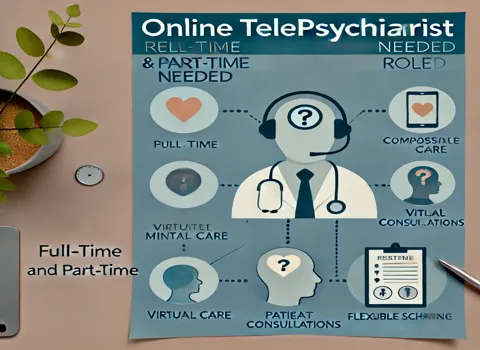Online Telepsychiatrist
Description
Frequently Asked Questions (FAQs)
What are the primary challenges of working as an online telepsychiatrist?
Telepsychiatry presents unique challenges, such as ensuring patient engagement in a virtual setting, maintaining strong rapport without in-person interaction, and addressing technical difficulties that may arise during sessions. Additionally, adapting treatment approaches to fit a digital framework while ensuring compliance with telehealth regulations is crucial.
How does telepsychiatry impact patient outcomes compared to in-person psychiatric care?
Studies indicate that telepsychiatry can be just as effective as in-person care, particularly for follow-ups, medication management, and psychotherapy sessions. It also improves access to mental health and provides mental health support to individuals in distant or underprivileged regions, which may enhance commitment to therapy regimens and strengthen overall outcomes.
What opportunities for professional growth are available in this telepsychiatry role?
This role offers multiple avenues for career advancement, including leadership opportunities, research participation, and continuous medical education (CME). Psychiatrists can move into supervisory roles, mentor junior clinicians, and stay updated with emerging psychiatric treatments and AI-driven telemedicine advancements.
What technology and tools are commonly used in telepsychiatry?
Telepsychiatrists use secure telemedicine platforms, electronic health records (EHR) systems, and AI-assisted diagnostic tools to enhance patient care. Familiarity with these tools and a strong digital ability to effectively convey information is crucial for excelling in this position.
How does this role promote work-life balance compared to traditional psychiatric practice?
A remote telepsychiatry position provides a flexible work schedule, allowing psychiatrists to balance their professional and personal lives healthier. Without the need for commuting, professionals can allocate more time to patient care, research, and continuing education while reducing burnout.




